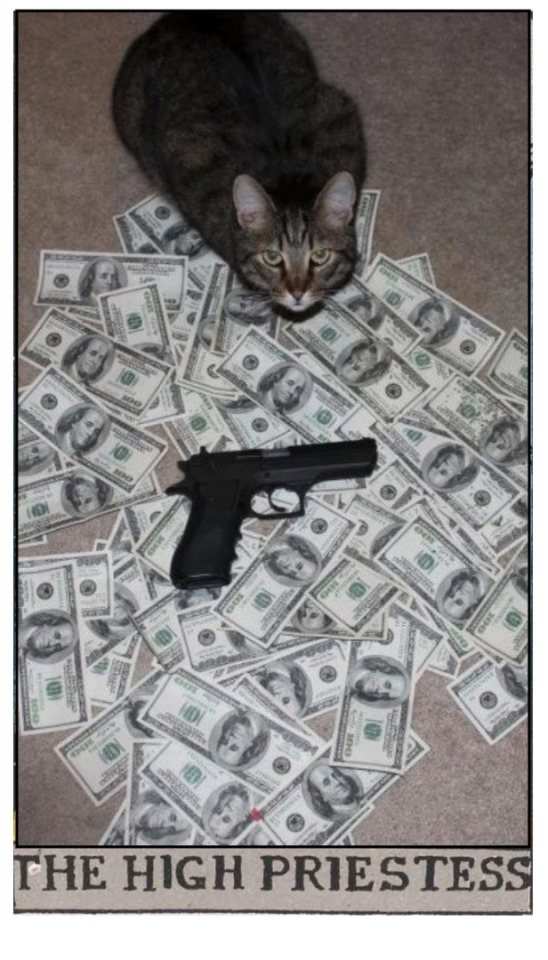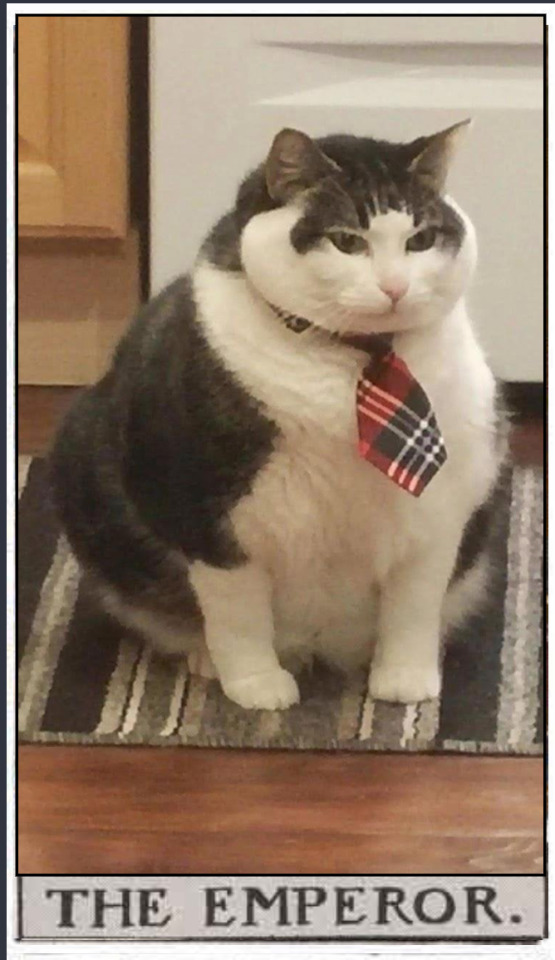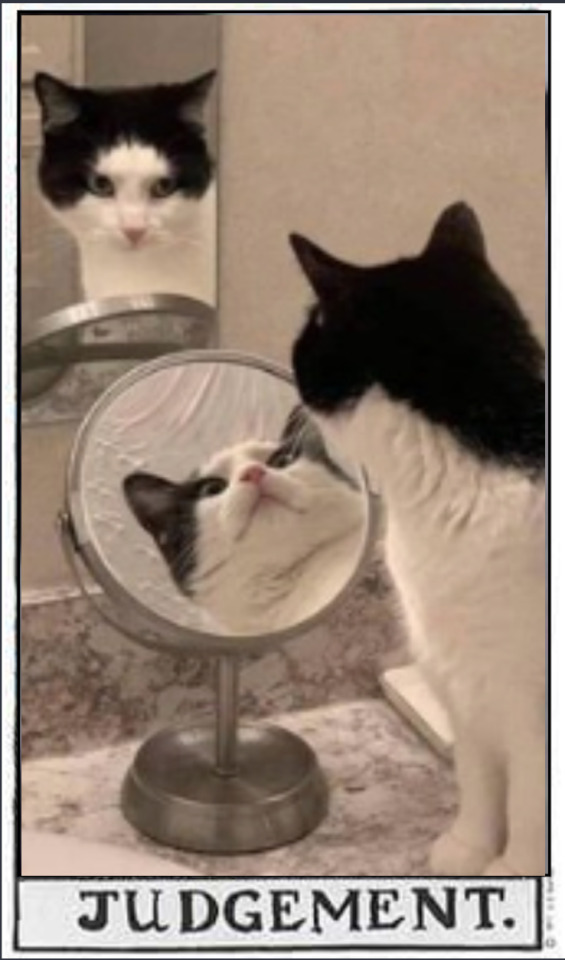dizzy • they/them • [free readings: closed] • herbs, tarot, spirit work, sigils and more • ♎♌️♏️ • 26/WA • header art by me
Don't wanna be here? Send us removal request.
Photo
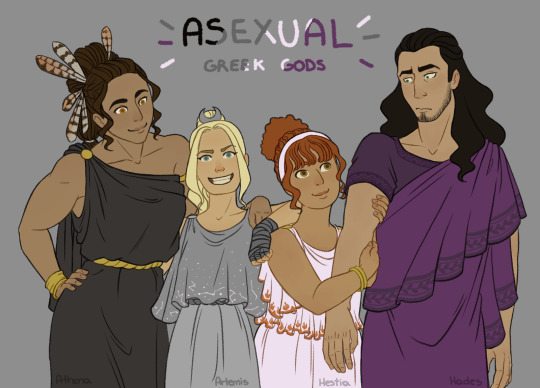
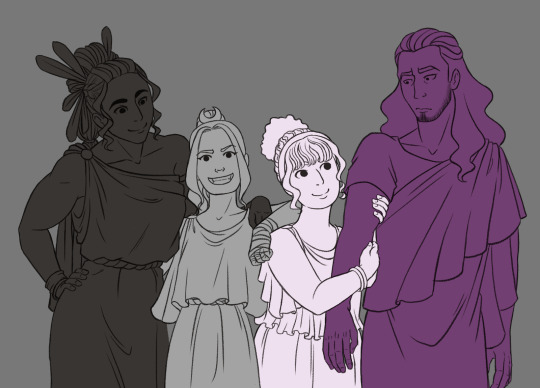
2020 is when I’m making ya’ll recognize the asexual Greek Gods (since I keep reading sad stories of gatekeeping against the ace community and more)
Athena, who doesn’t want anything sexual in a 10 mts radius around her. Artemis, she had a thing with a boy once but it was super platonic. Hestia, founder of the “Sex? NO THANK YOU” club. And Hades, specially depending on the variation of his myths was like “got a waifu, this is all I need for the rest of eternity”.
8K notes
·
View notes
Text
🌌 Witchcraft PSA: The Chakras & Cultural Appropriation ❌
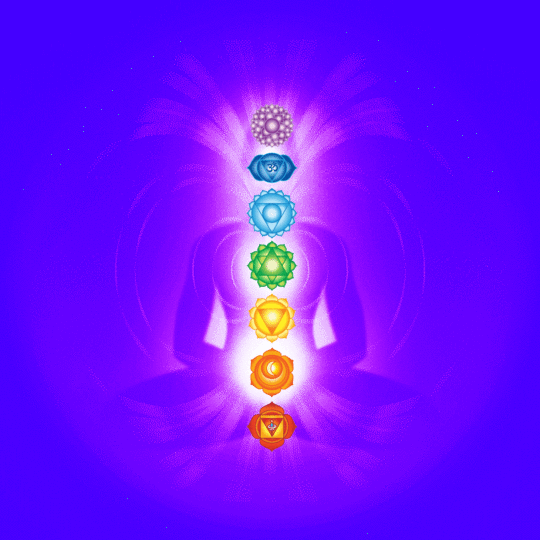
Warning: This is probably the longest post I've written so far, so be prepared for a VERY long read.
Disclaimer: I do not claim to be an expert, a historian, or a theologist. I am simply a witch, a student, and a POC living in the United States where many aspects of pagan spirituality are often appropriated from other cultures and perpetuated through simple ignorance. I'm sure this post will generate some type of controversy, but I do not mean to attack anyone or their beliefs with this post.
So. Here's the big one, guys. The post I've been dreading making but have really wanted to write for a while.
Cultural appropriation is one of the hottest topics in the modern witchcraft community, and the discourse about it on tumblr is far-reaching and incendiary at best. The problem: Where should witches draw a line between explorational spirituality and cultural appropriation?
I'm not here to lay down laws of morality. I'm not the cultural police. But I DID have a very eye-opening experience recently that led me to create this post.
I'm a white-passing minority, and I won't pretend that this doesn't lend me a degree of privilege in America. Especially as a witch, many doors are open to me. Just within the witchcraft community, I look white enough to be welcomed whole-heartedly into most neopagan circles. That's not to say that blatant racism is abundant within the pagan community, but we can't deny that many non-white cultural practices are heavily stigmatized. For instance, as SOON as any of my "light worker" friends hears that I have a family background in Santeria and Brujeria, the FIRST thing I hear is, "Oh, I don't mess with that dark stuff," or "Well, I don't like the idea of hurting animals and other people." And don't get me started on the ignorant conversations one of my dark-skinned, Vodou-practicing friends has had to sit through before.
Like, what?
Because of this, I'm often the first person within my social circles to stand up for cultural barriers and denounce cultural stigma. Above all else, I try to respect the hell out of closed cultures and educate myself about cultural appropriation.
So, it was much to my dismay when I discovered that I have been culturally appropriating the chakra system for the last 11 years of my witchcraft practice.
The chakra system and its use in western occultism is one of the most heavily debated topics in the witchblr community. A simple search will yield dozens upon dozens of posts, each filled with witches claiming that usage of the chakra system either IS or IS NOT appropriation. For the most part, I've tried to stay out of this debate. I've incorporated the chakras into my practice since I began, but I thought my oriental heritage and my "thorough" understanding of the chakras made this okay. But, lo and behold, I was sorely mistaken.
So, after some deep research into this topic, and after talking to several Hindus and Buddhists, here's my attempt to shed some light on this issue.
What are the chakras (according to Western occultism)?

As a brief overview, the chakras are believed to be spiraling energy centers that exist within the subtle body. There are seven of them, and they lie along the spine in places where large amounts of nerves and vital organs exist. Similar to the way our brain is a large compilation of nerves, these chakras are believed to be the intersection points of energy currents within our spirit.
Each chakra rules over a particular psychological, physical, and spiritual state of being, and disruptions within the chakras are believed to lead to different types of mental, emotional, and physical illnesses.
These chakras are depicted as lotus flowers with varying numbers of petals, and each is represented by its own color. Each one also corresponds to a Sankskrit syllable mantra which is believed to activate the chakra when spoken aloud.
In order, they are:
❤ Muladhara - The Root Chakra - Connection to the Earth and the Self - Located at the base of the spine - Depicted as a red lotus with 4 petals - Mantra: LAM
🧡 Swadhisthana - The Sacral Chakra - Connection to sexuality and instinct - Located near the sexual organs - Depicted as an orange lotus with 6 petals - Mantra: VAM
💛 Manipura - The Solar Chakra - Connection to will and identity - Located in the Solar Plexus - Depicted as a yellow lotus with 10 petals - Mantra: RAM
💚 Anahata - The Heart Chakra - Connection to love and relationships - Located in the heart - Depicted as a green lotus with 12 petals - Mantra: YAM
💙 Vishuddha - The Throat Chakra - Connection to voice and communication - Located in the heart - Depicted as a blue lotus with 16 petals - Mantra: HAM
💜 Ajna - The Third Eye Chakra - Connection to spiritual awareness - Located above and between the eyes - Depicted as a purple lotus with 2 petals - Mantra: OM
🌈 Sahastrara - The Crown Chakra - Connection to Source/the Universe - Located at the top of the head - Depicted as either a purple, rainbow, or white lotus with 144,000 petals - Mantra: Silence
Along with these associations, each chakra is often associated with various crystals, herbs, and spirits.
What are the chakras within their original cultural context?
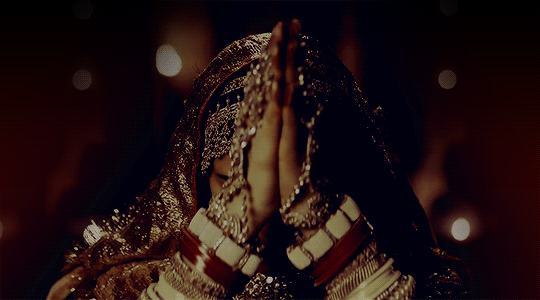
The concept of 'chakras' arose from a practice known as Tantric Yoga. This was a spiritual system that began to gain popularity in India and other eastern cultures between 600-1300 CE. Up until this point (and concurrently as well), most types of spirituality in these cultures was very transcendental - that is, they had a fundamental belief that the Divine was transcendent and inherently 'above' the natural world. Therefore, in order to commune with the divine, it was believed that the material world had to be renounced and denied, and higher states of consciousness had to be achieved in order to commune with divinity.
Tantric spirituality flipped the script. It adopted the idea that divinity was an inherent quality of the natural world, and that a person could freely commune with the divine by opening themselves up to the world around them through mindfulness and all-embracing compassion.
The philosophies and teachings of tantric yoga (loosely known as 'tantras') became extremely widespread throughout this period and dramatically shaped many emerging sects of Hinduism and Buddhism. As this philosophy spread, many different types of specific spiritual practices arose, many of which can be recognized in our Western ideas of holistic meditation - such as mantras, mudras, mandalas, and even modern Western yoga.
One such concept that gained popularity was the idea of chakras - focal points of spiritual energy in the body. However, these chakras were very different than what Westerners think of today.
There were a LOT of different traditions that arose from Tantric teachings, and each one had its own unique belief about chakras. The most obvious difference between these chakra traditions was that each one believed in a different number of chakras. Some systems had three, others had six, others had seven, others had nine, others had 10, others had 21, etc.
Each one approached the chakras a bit differently, and so each one believed in a different number of chakra centers.
What are some of the primary differences between Western Chakras and Tantric Chakras?
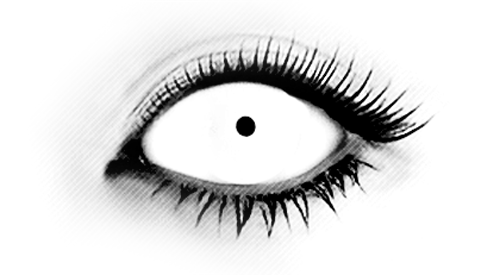
The most eye-opening difference for me was that Tantric chakras have none of the associations that Westerners believe in today. Original practitioners of Tantric spirituality did not associate specific colors with each chakra, they did not associate physical or psychological states with them, they did not associate any herbs or crystals or planets with them, and they did not even associate Sanskrit syllables with them. What's more, they didn't even believe they were located in fixed points on the body.
Loosely, they believed that the chakras - like all things spiritual - were very fluid. They could often be accessed through general areas of the body, but they definitely were not stagnant, fixed points. This also accounts for the varying number of chakras, because it was believed that the chakras would manifest in different ways depending on what traditional practice you used to approach them.
Many traditions did believe that these chakras could be depicted as lotus flowers with various petals, but these were not meant to inherently describe the individual chakra. Rather, these depictions were meant to serve as a visualization for a person to meditate on when trying to access a specific chakra.
Along with this, these traditions did not assign specific names or syllables to these chakras - at least not the ones we use today. Rather, it was believed that Sanskrit syllables carried an inherent magic or divine energy within them (similar to Kabbalistic views of the Hebrew language), and they assigned various letters and syllables to the petals of each lotus flower, which corresponded to various energies in nature.
The symbols, names, and Sanskrit syllables popularized in the West today don't even correspond to any kind of Tantric chakras. They actually correspond to the elements within certain traditions of eastern spirituality. They also are not meant to be uniquely associated with any individual chakra. Rather, these syllables were used in meditation to invoke specific elemental energies into different chakras depending on the situation.
If your tradition believed that the heart chakra could affect the relationships in your life, and your personal relationships happened to be very stagnant, you could vibrate the syllable for the Wind element and invoke that energy into your heart chakra to help your personal relationships become more dynamic. Etc.
This brings me to the final thing I'd like to talk about: Westerners are NOT using the chakras for their original purpose.
The only concrete associations that tantric traditions had for the chakras were deities. These traditions believed that each of their chakras was associated with a specific Hindu deity (though the specific order or deities listed varies between tradition and time period).
The original purpose of 'working with chakras' was to eventually invoke the energy of these specific deities into a person's chakras in order to become closer to these gods and goddesses and emulate their behavior and teachings in daily life.
How did the original concept of chakras get misconstrued in Western culture?
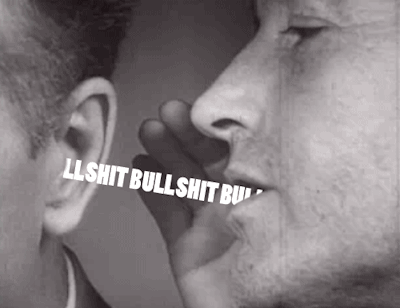
Oh, boy. This is a tough answer that's soaked in 1000 years of colonialism, racism, cultural and linguistic barriers, and simple misunderstandings.
But, simply put, the appropriation of tantric chakras can be narrowed down to four specific individuals.
In 1577, a spiritual teacher and academic named Purnananda Yati wrote a treatise of tantric teachings called the Shatchakra Nirupana, or roughly 'An Explanation of the Six Chakras'.
In this treatise, Purnananda lays out the modern framework we see today - six chakra centers within the human spirit, with an additional seventh chakra above the head that connects the spirit to the divine source. He based this concept off of an earlier writing from the 13th century, which also details this framework but openly acknowledges that this is just ONE tradition, and that many other traditions also exist.
In 1918, a British scholar named John Woodroffe translated Purnananda's treatise from Sanskrit into English, and unfortunately, there were many mistranslations in Woodroffe's version. This translation was what eventually gained extreme popularity throughout academic and occult circles in the West.
Throughout the 1930's, 40's, and 50's, the renowned European psychologist, Carl Jung (who you might recognize from your Psych 101 class), became fascinated with the idea of chakras and their relation to consciousness. Throughout this time period, Jung wrote extensively about potential connections between the seven chakra centers and various psychological states. This is where the chakras became associated with different states of being, such as instinct, will, and sexuality.
Finally, in 1987, an American occultist and spiritualist named Anodea Judith published a book entitled Wheels of Life. In this book, Judith talks extensively about the seven chakras, and even lists correspondences between the chakras and various herbs, crystals, elements, planets, tarot cards, deities, and archangels.
Her book became wildly popular within holistic and spiritual circles, and set in stone the way that modern neo-pagans view the chakras in the West.
So, are chakras part of a closed culture?

Yes and no.
Chakras as we view them in the West are, at best, a distorted and bastardized version of a beautiful, ancient belief. They were studied and theorized by many traditions for over a thousand years, and many of these traditions still exist today. Most commonly, they are still used in Shaivism, which is one of the most prevalent forms of Hinduism in the East.
Many of these living traditions ARE, in fact, closed. But more than that, to perpetuate (and worse, claim spirituality from) a distorted, white-washed version of an Eastern religious belief is just plain disrespectful and potentially racist at its worst.
That being said, though, there are certain living traditions which ARE NOT closed, such as the exceedingly popular Tibetan Buddhism. These traditions recognize many of the same teachings and are freely shared with people of any nationality or background - as long as you put in the work to learn about them.
The Main Takeaway
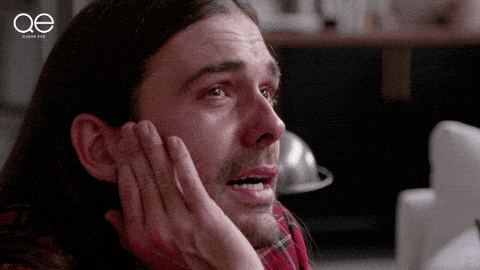
The chakras, as viewed in the West, are incorrect. This is not to disclaim any type of spiritual experience Westerners may have had by utilizing chakras in their practice, but I'm of the opinion that Westerners should recognize that the "chakras" they believe in don't actually have any basis in ancient spirituality.
That being said, the concept of a subtle body and energy centers within the human spirit is not unique to the Far East.
The concept of currents and centers of energy within the body can be found in cultures the world over, from India to Japan to Korea to Africa to the Middle East, and even among the Native Americans who never came into contact with these other cultures (as far as we know).
The human soul, the subtle body, and spiritual energy are concepts that supercede cultural boundaries, and if studying and utilizing them is an integral part of your craft, then I encourage you to follow your personal path and find connection with the Universe in whatever way you feel called to.
But. Perhaps developing your own unique system and beliefs about the energy centers within the body is the best course of action for us Westerners. Until we ourselves make the effort to go join one of those (open) traditions, subscribing to the modern Western system of "chakras" is, in my opinion, cultural appropriation.
• • •
Brightest blessings, and best of luck 🌙
3K notes
·
View notes
Text
“It is easy, and natural, to ask ‘what is she goddess of’ as we like to define deities by areas of responsibility or the natural phenomena that they represent. The Egyptians probably didn’t think that way. To them the deities were primarily possessors of power which they would use in various ways. The Egyptians would pray to any and every deity about everything but there was a degree of specialization which was expressed using names, appearance, and roles in myths. Major deities have several spheres of interest which overlap but together make up a unique deity.”
— P28, Hathor: A Reintroduction to an Ancient Egyptian Goddess by Lesley Jackson (via satsekhem)
467 notes
·
View notes
Note
Mercury has always been doing the Cha Cha Slide, but people are freaking out when Mercury says "take it back now yall" It's okay friends, Cha Cha real smooth
This is the best ask I have ever seen
1K notes
·
View notes
Text
ward checkup checklist
if you have an astral or physical space that is warded, you’ll probably have many layers of wards or at least a few strong wards, but regardless of the number of wards you have it’s always prudent to do regular checkups.

do note that each of your wards will have a different composition and function so these checkups probably won’t apply to every ward, so based on the type of ward you will have to learn to adjust your checkup accordingly.
leaks and weak spots. this is quite universal for a lot of wards out there, especially for large wards or wards that involve more complicated shapes or that cover spaces that are filled with corners and objects. certain parts of the ward may be less concentrated than others or may receive less attention when being made, which makes them tend to become more vulnerable faster. make sure that the energy distribution is consistent when making or repairing wards.
stiffness or rigidity. sometimes wards can harden or become rigid in certain areas, which makes them more vulnerable to impact from attacks as they are more likely to break or shatter. there is a difference between rigid wards and sturdy wards, wards don’t necessarily have to be completely unmovable and inflexible to be sturdy and durable. keep energy flowing through wards until it breaks down the rigidity and keeps the wards more malleable.
decrease in concentration. sometimes wards can lose their energy when not in use, especially wards that are made to only activate when provoked. these can lose essentially the body and what powers the ward and make the ward less effective when in use. check up on these wards frequently and make sure that they are still functioning optimally.
clumps and clogs. the energy in wards can gather and clump up or cause a clog sometimes, especially in wards that involve moving energy. this can pose a problem as clumping often leads to well, blockages and decreased flow which can just slow the flow of the ward and stop it from doing what it was meant to do, you know? find clumps or clogs and work energy through it until it spreads out and the energy is flowing like it’s supposed to.
energy reactivity and selectivity. for wards that are meant to filter stuff (e.g. anti-glamour ward) or wards that only react when a certain set of conditions are met (e.g. offence ward that sucks intruders’ energy), they can get less reactive or less selective over time without use. check these wards frequently and test them to ensure that they still work optimally.
energy contamination. for wards that are used a lot and involves a lot of passing through, or wards that are for cleansing or absorption, these can get contaminated very easily. cleanse these regularly or reset them to ensure maximum function.
1K notes
·
View notes
Text
Tips for Witches With ADHD
So, I have ADHD, and it can definitely make Paganism and witchcraft a little hard sometimes, so I compiled a little list of ADHD witch tips. 1. Use that hyperfocus to your advantage. If you find yourself really interested in a certain pantheon or really excited about a spell or something, don’t hold yourself back. Make sure you don’t get so invested in the thing that you forget to eat/drink/shower/use the bathroom, but feel free to spend a day just researching something. 2. Don’t put things off. When I was a baby witch, I saw people saying that witches should spend several weeks working on a spell before doing it. I song recommend that for ADHDers, because after a few weeks, your focus will have wandered and it will be really hard to put enough energy into the spell. I usually spend a few days to a week working on a spell, and it’s more than enough time. 3. Make meditation more fun. I know perfectly well that it’s pretty much impossible to sit still in silence for more than five minutes when you have ADHD. Listen to calming music or a meditation podcast while meditating to make it a little easier. If you get a really bad urge to move, it’s okay to shift around a little. Drinking a cup of coffee beforehand can really help. 4. It’s okay to take breaks. Sometimes it’s hard to stick to things when you have ADHD. If your path starts seeming monotonous and boring, it’s okay to take a little break. 5. Accept that some things will be too daunting. You’ll see witches posting seemingly amazing accomplishments in the astral world or with tarot or with their knowledge of crystals, and you may feel like you aren’t enough of a witch because of how impossible these things seem. ADHD can make things feel like such huge tasks that sometimes you might not be able to do things that you wish you could in your path. I’m not saying not to try to learn how to do these things, but don’t beat yourself up if it’s too hard. 6. Use representations in your spells. It can be really hard to visualize if you’re an ADHDer. If you’re casting a spell on someone, as an example, use a poppet to represent them so you don’t have to work as hard on focusing on visualization.
447 notes
·
View notes
Text

Is this taken from that Danny Devito meme? Yes, Indeed it is.
Choose by intuition or pendulum and not visual appeal (or you can use the technique I learnt from Servantofthefates here to pick an image that strikes a memory in you)
DM or email me at [email protected] to book a personal reading with me.
Tips are appreciated 🍀
Keep reading
467 notes
·
View notes
Text
someone explain the jewish holidays to me like i'm 5 years old
379K notes
·
View notes
Text
❌ how to know if you’ve been hexed ❌
and what to do
one of a witch’s worst fears is being cursed, hexed, jinxed, etc. here, i’ll explain symptoms of these negative spells and how to reverse it or protect yourself.
stay safe! 🌈🧿🌞
difference between: curse, hex, vex, and jinx
there are many types of negative spells so it’s totally normal to be confused between the terms :)
curse: causes direct harm to the victim, this is probably the most intense version of negative magick
hex: ill intentions are wished upon the victim
vex: similar or same as jinx, harasses the victim
jinx: a simple negative spell that causes discomfort or inconveniences to someone
symptoms
personal items going missing
intense nightmares
sudden medical problems
sudden legal problems
hard time falling asleep
sudden relationship problems
loss of energy
a string of bad luck
random pain
scattered mind and confusion
bad memory
⚠️ disclaimer ⚠️
you will also “feel” as if you’ve been cursed/hexed. a lot of these symptoms can be a part of mental illnesses so if you’re already struggling mentally, talk to your medical provider about these issues. trust your gut!
also, you’re more likely to be cursed if you know a lot of witches or a lot of witches know you. if you keep your craft a secret and don’t post about it on social media, chances are you probably aren’t hexed.
think about if you’ve angered anyone who practices witchcraft or has ill wishes against you and consider if any medications you could be taking could cause negative side effects.
what to do
reflect the spell back at the caster
cast a protection spell
do divination work (pendulum or tarot) to see if you’ve been hexed
meditate and cleanse your chakras
bind the caster if you know who they are
use protective talismans (such as the evil eye)
utilize your knowledge on herbs and rocks for protection
2K notes
·
View notes
Text
Incorporating Magick into Everyday Life ✨

🔮 Greet your deity, deities, household spirits, or the universe every morning
🔮 Incorporate your witchcraft into jewelry. Where rings on certain fingers for different correspondences. Wear gold or silver depending on what you want to attract. Wear symbols of your craft (pentacle, triquetra, cross, Star of David)
🔮 Use color magick when planning your outfits
🔮 Stir your morning coffee or tea clockwise to attract something and counter-clockwise to banish something
🔮 Find time to meditate for at least a couple minutes
🔮 Water any plants you have with moon water (water charged under a full moon) or sun water (water charged in the sun)
🔮 Carry around crystals to bond with them
🔮 Make a travel altar for work or school. You can add things like your favorite crystal, a pendulum, a pentacle charm, salt, symbols for the elements
🔮 Write sigils wherever you go to brighten someone else’s day, to stay focused on your task, for confidence, etc.
🔮 Pull a daily tarot card
🔮 Say a positive mantra every morning
🔮 Add to your book of shadows or grimoire if you have one
🔮 Make you meals into spells. Research the correspondences and use intent and visualization to add magick to your meals
🔮 Talk to your plants, crystals, and tarot deck
🔮 Tend to your garden if you have one
🔮 Take time to ground yourself everyday
1K notes
·
View notes
Photo

“Current Magic Upon Me Be Null And Void”
Burn this sigil to ash and add it to your bath with some Epsom salts (or a little regular salt if that’s all you have access to) while it runs. Sometime during the taking of your bath be sure to submerge yourself in the water for a moment
2K notes
·
View notes
Text
I’m living deliciously and you should too.
As such, lemme introduce you to Special Oil #20.
Special Oil #20 is, for context, a condition oil that’s about as general purpose as a condition oil can come. You can use it to dress candles, annoint petition papers and charms, or even wear it for a burst of luck. Best part about Special Oil #20 is that it works as a carrier oil for other spells, so you can compound its effects with your other workngs.
There are a metric fuckton of recipes out there for a “Special Oil #20”, each with a diverse array of ingredients and/or purported effects. The OG formula, which is theorized to take its name because it was the 20th recipe in a magicians working notebook, has pretty much been lost to time, but modern Special Oil #20 blends nevertheless pack a punch. Here’s one of the best, simplest formulas I’ve ever learned.
Take a fistful of dried Patchouli and dump it into a pan. Cover this completely with some sort of carrier oil (I’m using olive oil for the batch that’s cooking as I write this, but sweet almond is a classic, jojoba works, really any non-mineral oil) and stir so that there are no pockets of air.
Take this pan and place it over a pot full of boiling water, effectively making a double boiler. Cook on low heat (like 120 to 140 F) for an hour, or until the smell of the carrier oil is replaced by the smell of the patchouli. Add more herb as needed.
Take this oil and strain with cheese cloth or a mesh sieve into a sterile glass bottle, then add Vanilla extract till it smells amazing, or a whole vanilla bean. Label and date, and seal with an airtight seal.
Place this oil on a shrine or altar or what have you and store there until appropriately consecrated (you guys can figure this out), praying over it to have the desired effect if you’re into that.
After consecration, store in a cool dark place when not in use, and keep until it smells whack or looks super cloudy (rule of thumb is to toss after a year).
Congrats, you’ve got Special Oil #20
Happy Conjuring,
Key
933 notes
·
View notes
Text
Aquarius Full Moon ~ August 3rd 2020 ♒️🌕✨
while a lot of the aspects and conditions present during this month’s full moon may sound negative and scary, please remember that these disruptions and challenges are happening for a greater good. there are positive outcomes possible here if we can look at and consider the bigger picture! keep in mind that the universe is setting us up for growth! my take here is to stay open-minded and flexible to what happens. here’s the breakdown:
Moon square Uranus: unexpected and unpredictable changes or events that could lead to emotional upsets. this will require patience, adaptability, and patience to navigate. may be feeling tense, restless, impulsive, and unfocused due to the uncertainties presented. could struggle with impulsive behavior and mood swings. try to resist the urge to make big changes or give into reckless behavior, as the results and consequences could beget more chaos for you later on. let what falls away during this time stay gone. there is a greater purpose for the releases and shake ups experienced during this time.
moon @ 11 degrees AQUA: degree of “restraint” - lends itself to feeling trapped or literally restrained. moderation and temperance are key here, as wanting to rebel against these feelings in the name of being “free-spirited” and “pursuing passions” may lead some into going too far. keep in mind that it’s likely for your situation/circumstance to change.
uranus @ 10 degrees TAURUS: degree of “self-service” - lends itself to shrewd and self-centered thinking. can indicate getting what you want by means of observing, watching, and looking out your yourself.
Mercury opposite Saturn: propensity for possible bad news or pessimistic thinking. potential disagreements as words may be extra critical, blunt, or even outright lies. decisions made more difficult by troubles concentrating and miscommunications. on the plus side, it’ll be a good time for digging deep, introspection, and even occult studies. keep in mind that things may seem to be worse than they actually are.
mercury @ 27 degrees CANCER: degree of “harmony” - lends itself to being susceptible to our surroundings but also having the ability to take refuge in nature. this is important because we may be dealing with self-sabotage, conflicting desires, or oppositions: this is a degree of trying to strike balance.
saturn @ 27 degrees CAPRICORN: degree of “definition” - lends itself to defining moments, “make or break” time. may be critical or doubtful of what you see and hear, and/or potentially become more set in your ways/thoughts. try to use this tenacity to keep pushing through.
Mars square Jupiter: facing tension and resistance that can potentially lead to breakthroughs and productivity if channeled correctly - but on the other hand there could be impatience and frustrations that create show-downs and confrontations.
mars @ 19 degrees ARIES: degree of “inquisitiveness” - lends itself to feelings of aggression, action, and fearlessness
73 notes
·
View notes


